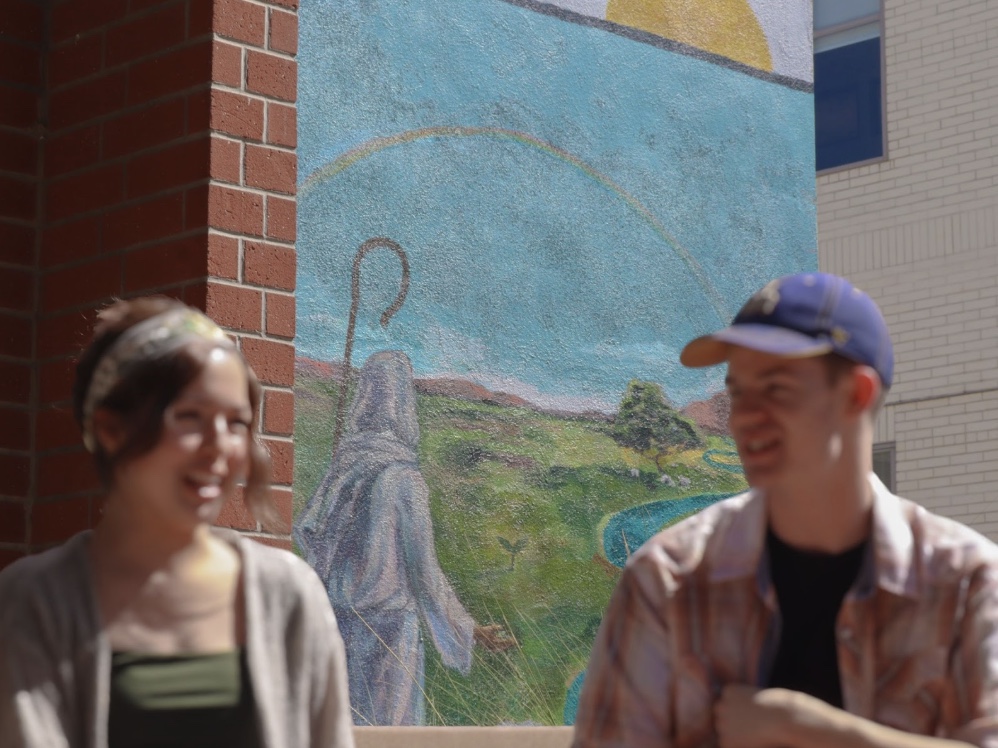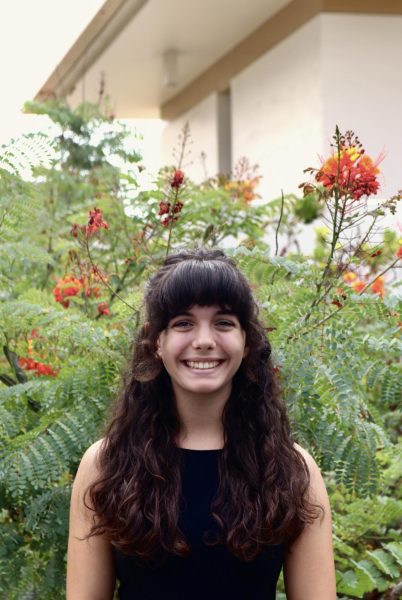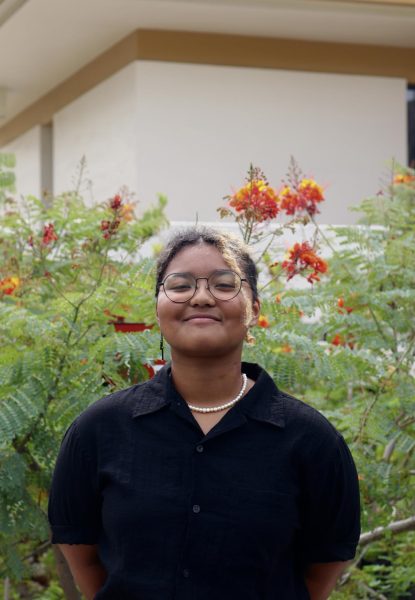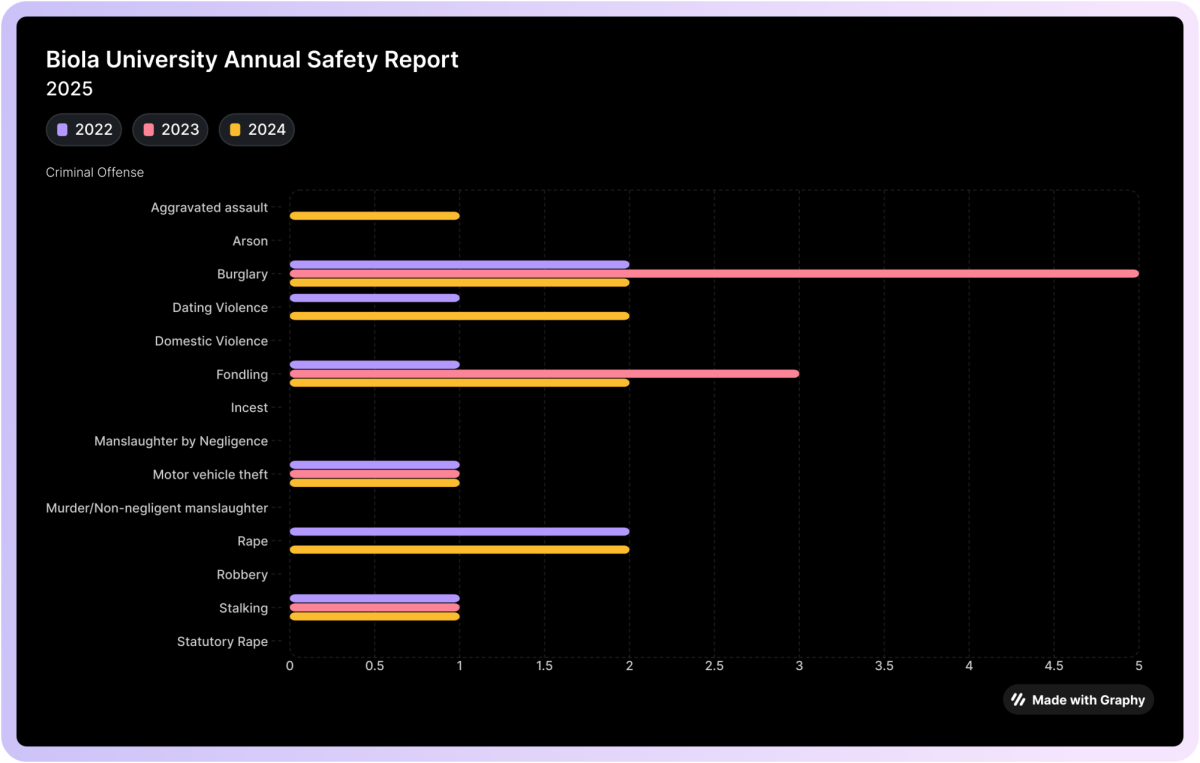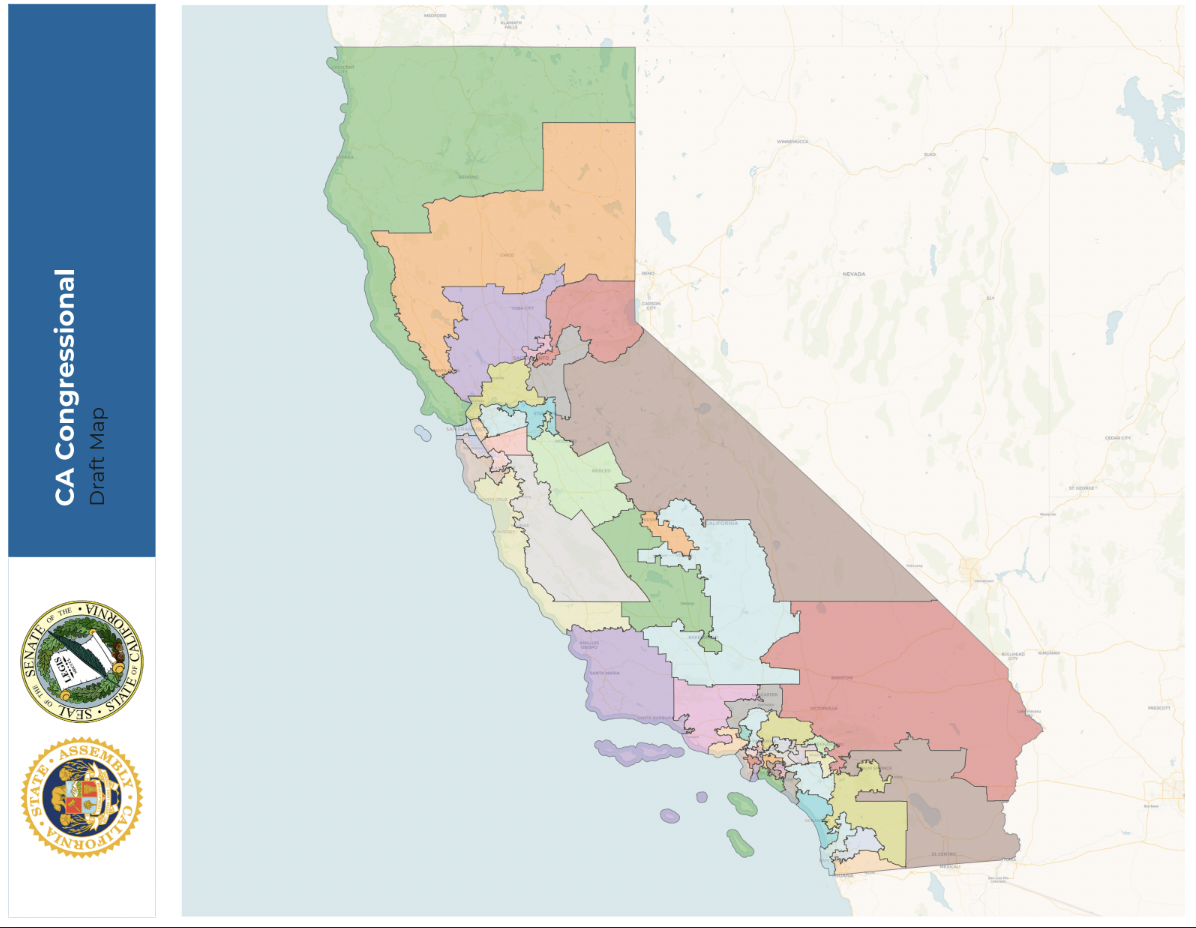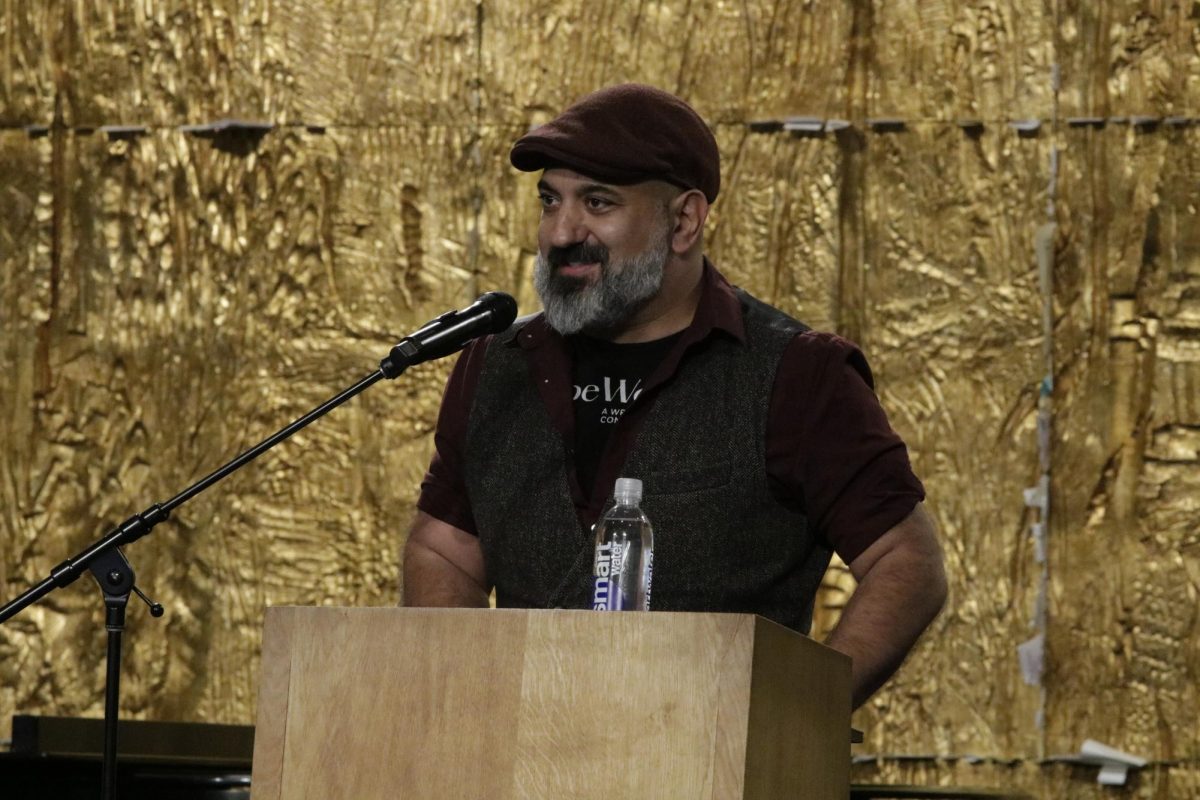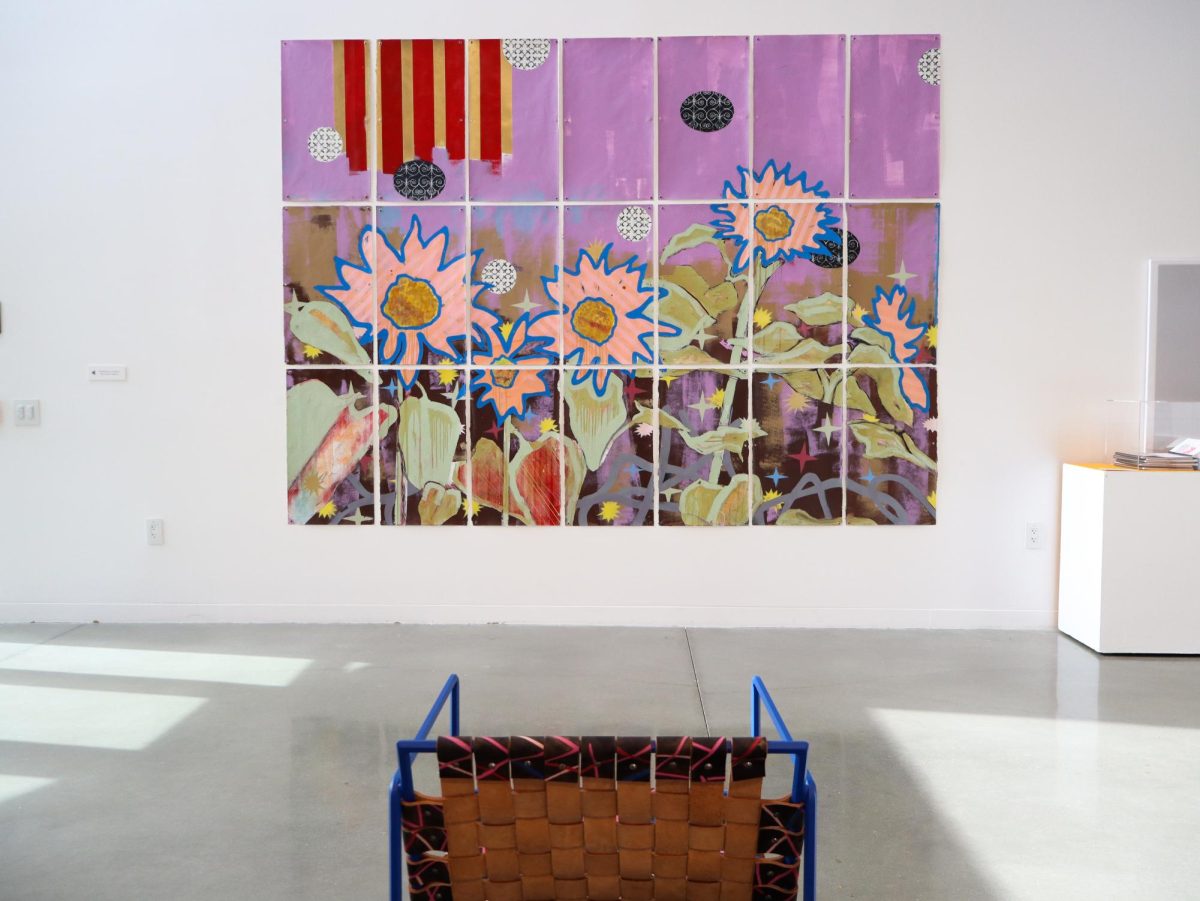The Committee of Art in Public Spaces (CAPS) along with the Dean of the School of Fine Arts and Communication (SoFAC), have decided to reverse their decision regarding the student-made mural beside the library. From the start, the piece was intended to be a temporary installation. Now, rather than having taken down the mural after the spring 2025 graduation, CAPS has allowed it to remain standing for the upcoming fall 2025 and spring 2026 semesters. In a statement made to the Chimes, CAPS and SoFAC expressed that they wish to encourage more student art in the future, and hope that their new policies will facilitate this.
RECAP OF FORMER CONTROVERSY
Last spring, Biola art students – Alisha Mark and Lily Guild – painted a mural beside the library. This mural was meant to complement the prayer garden, located beside the library and behind the Health Center, that was likewise being installed in the area. Unfortunately, there was a miscommunication between the artists, CAPS, and the Dean of SoFAC, resulting in the decision to have the mural removed following the spring 2025 graduation.
In response to this decision, Mark created a petition to keep the mural. This petition gathered hundreds of signatures in a matter of days, showing the emotional connection students felt for the piece. Nevertheless, CAPS announced that their decision was final; they would proceed with the removal.
STUDENT RESPONSES
Despite this decision, student sentiments surrounding the mural remain strong. As students have begun returning to campus for the fall semester, many noted that the mural is still standing. This was a pleasant surprise for students, who had strongly voiced their enthusiasm for the mural’s presence on campus.
Returning student Abby Jackson, a junior biology major, said, “[The mural] is very beautiful and meaningful! I think that it demonstrates the creativity of the students. It shouldn’t get taken down.”
Along with returning students, incoming freshmen also had thoughts on the mural. Many noticed it as soon as they arrived, forming a personal connection to the public art piece.
Bianca Alvarez, a freshman in biology, says, “It’s such a sweet reminder that God is not only our Father [and] our best friend, but our shepherd, a lamp unto our feet.”
Students have also expressed how the mural by the library is a place of peace and calm. It’s somewhere they can go to quiet their minds and escape the chaos of college life.
“I love seeing different pieces of art around campus, I think it brings life … [The mural] offers a different atmosphere in that section. It’s a peaceful, more secluded section of campus,” said junior biology student Paris Rubio. After giving their thoughts on the piece, multiple students decided to return to the prayer garden. They wished to, once again, enjoy both the mural and the surrounding atmosphere.
Many even say that they find more joy in student artwork than in pieces Biola has commissioned. “It’s better than the fidget spinner,” said Rubio, in reference to the sculpture “Faith of Our Farmors,” which notably includes an interactive piece: hands clasped, folded in prayer, that spin.
ARTIST RESPONSE
Since learning that the mural still stands, Mark and Guild themselves have had a similar reaction as the general Biola community, although without the same criticisms of CAPS and SoFAC. Both were surprised. However, neither artist harbors any hostility towards CAPS or SoFAC. Instead, they state that they have had great experiences with the Biola Art Department. Both artists have been inspired and encouraged by students and faculty alike, and are at peace with whatever happens to the mural.
The artists look forward to working on future projects, both on and off campus. Though, the art process may look a little different for Mark, as she is no longer a student at Biola. Rather, she has transferred to USC, and is now in USC Roski’s BFA Art program. Mark made clear that the initial decision to take down the mural had no effect on her decision to transfer.
“Biola, Torrey, and the art department have contributed immensely to my education and faith,” said Mark, “However, after I switched my major from journalism to art in my freshman year, I knew I might want to eventually transfer to a more well-known school. Furthermore, after prayer and reflection, I recognized the need to more deeply pursue specific interests elsewhere, such as critical theory, human rights, and the climate crisis. I am grateful for God’s work in and through me these past two years, but also for all the new doors He has opened for my future.”.
In regards to her petition efforts, Mark said, “A friend suggested it to me as a joke, but I thought it through, resolving that a petition would be a way to challenge myself while applying certain ideas I learned through my Biola education—particularly in the Contemporary Art Trends class and also John Locke’s Second Treatise on Government.”
DEAN RESPONSE
Following the miscommunication between the artists and CAPS, some students feel that CAPS has been unclear with their processes regarding public art installations. However, this event provides a good opportunity for SoFAC to clarify their guidelines for future student projects.
The Dean of SoFAC, Todd Guy, expressed that the incident with the mural allowed SoFAC to reflect on what the opportunity to display one’s art means to Biola students.
“A thoughtful discussion, involving input from the administration and a subcommittee of the Committee on Public Art (CAPS), concluded that it is important for students to have the chance to install temporary public artworks,” said Guy, “These discussions led to the decision to keep the mural up for both the upcoming fall and spring semesters.”
While many factors played a role in this decision, Mark’s petition was one of the key contributors. The petition for the mural was presented to the Dean of SoFAC before graduation, and allowed him to truly hear the voice of the students.
“Student voices are always valued and taken seriously by SoFAC, CAPS, and the administration. I see the petition as a way for students to express their opinions. Those voices were heard, and the administration considered their suggestion to keep the mural,” said Guy.
Guy asserted that CAPS and SoFAC have been consistently clear on their policies regarding student art. They have a new application process, with clear policies and guidelines, which will allow students to propose temporary art installations. If approved, these art installations will be displayed for a period of up to twelve months. In this way, CAPS and SoFAC hope to facilitate more student art around campus.
In a closing statement, Guy said, “I can speak for SoFAC, the art department, and CAPS that student expression, as seen in public art, offers opportunities for our community to experience truth and beauty. We want our community to experience and engage with more public art, not less.”

